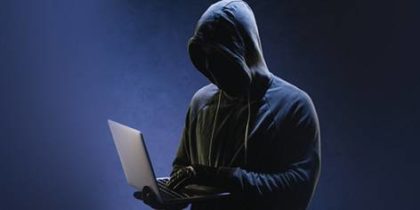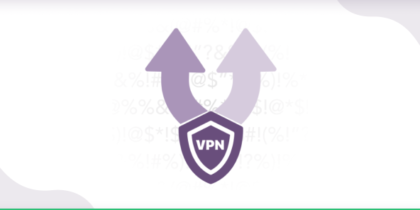Your email could be compromised.
Scan it on the dark web for free – no signup required.
Is your password really safe?
A colossal security lapse has just hit the digisphere – an entirely unprotected database, containing 184 million plaintext passwords tied to Google, Facebook, Apple, banks, and government portals, was publicly exposed. No encryption. No password protection. One researcher called it a “cybercriminal’s dream.”
Key Facts At A Glance
- Discovered By: Cybersecurity researcher Jeremiah Fowler
- Exposed Records: Over 184 million account credentials
- Type of Data: Usernames, passwords, emails, URLs, financial and health account credentials
- Affected Services: Google, Facebook, Apple, Instagram, Microsoft, Snapchat, and more
- Protection Status: None – data was stored in plain text, accessible without encryption or login
- Cause: Likely harvested by infostealer malware
- Has It Been Removed? Yes – taken offline after the researcher reported it to the hosting provider
- Protection Tip: Users can run a free PureVPN Dark Web Exposure Scan to check if their email addresses have been found in this or related breaches.
What Happened?
Hot on the heels of a data breach that leaked over 16 billion passwords, another alarming discovery has surfaced. Researcher Jeremiah Fowler discovered an unsecured, 47 GB Elasticsearch database containing 184 million (to be precise, 184,162,718) unique usernames and passwords, all stored in plain text.
The database appeared to be a collection of stolen credentials harvested by infostealer malware, and included records tied to:
- Big tech platforms like Google, Facebook, Apple, Microsoft, Instagram, and Snapchat
- Banking and financial services
- Health platforms and government portals
It was discovered in late May 2025 and had been completely unprotected online, with no encryption or access controls. Just a publicly accessible file sitting on the internet.
Fowler alerted the hosting provider, which removed the file, though the owner, whether malicious or accidental, remains unknown. Fowler also contacted several users in the leak, and many confirmed the credentials were valid.
What Data Was Leaked?
A staggering 184 million unique account credentials, including:
- Usernames and emails
- Plaintext passwords
- Account URLs
- Bank and healthcare credentials
- Login data for government sites
This isn’t just an exposed vulnerability; it’s a cybersecurity disaster in the making.
Why This Breach Matters
Unlike many breaches that rely on ransomware or backdoor access, this one didn’t require advanced hacking — it was just sitting there unprotected. That makes it even more dangerous:
- Anyone with the link could access and download the data
- Hackers can weaponize this info for credential stuffing, phishing, or identity theft
- Sensitive financial and medical details increase the risk of fraud and impersonation
This isn’t just a warning about one breach — it’s a reminder of the growing trade in stolen credentials and the lack of basic security hygiene that still exists.
Who’s Behind It?
The exact individual or group behind this unsecured database remains unknown. The hosting provider declined to reveal the identity of the account owner. Fowler believes it may have been created using infostealer malware, commonly used to scrape credentials from infected devices.
This tool automatically harvests usernames, passwords, and other session data and sells or shares it on the dark web.
Researchers warn that this “cybercriminal’s dream working list” is easily weaponized for credential stuffing, account takeovers, and phishing.
Why This Is a Wake-Up Call
Plaintext leaks are rare and utterly avoidable, yet still happening.
It’s not just about major platform breaches; your personal files may be compromised on your own device. Credential reuse, leftover sensitive data in emails, and lax security practices put everyone at risk. Here’s how it can affect you in the long run:
- Pain‑Free Attacks for Hackers: Unencrypted plaintext files are a low-cost win for cybercriminals — no decryption needed, immediate dark web readiness.
- Credential Stuffing Nightmare: Many users reuse passwords — around 81% — this makes credential stuffing (automated login attempts across sites) devastatingly effective.
- Account Hijacks & Identity Theft: With active credentials in hand, attackers can infiltrate email, banking, or government accounts.
- Phishing Becomes Highly Targeted: Knowing your email/platform access helps hackers craft convincing, personalized scams.
- Sensitive Data from Financial & Health Portals: This isn’t just social media; your most personal data is now vulnerable.
These risks compound when sensitive services are involved, such as banking, government, and healthcare.
What Can You Do To Stay Safe?
Whether you’re a business professional, employee, or customer, these breaches reinforce the need for proactive cybersecurity hygiene:
1. Check If You Were Exposed
Use PureVPN’s free Dark Web Exposure Scan (also linked above) to check if your data has been leaked. The tool scans known breaches and in 30 seconds, you can learn:
- Breach Severity: Assess the criticality of the breach.
- Recency of Exposure: Identify how recently your data was compromised.
- Number of Breaches Detected: Understand the extent of your data exposure.
Being informed is the first step toward safeguarding your digital identity.
2. Change Your Passwords Immediately
If you’ve reused passwords, update them now with strong, unique ones. Use a password manager to generate and manage these securely. You can also take advantage of PureVPN’s Password Manager, which allows you to generate strong, unique passwords, save them securely.
Also, enable two-factor authentication (2FA) everywhere possible to block unauthorized logins.
3. Stay Vigilant
- Monitor bank statements and email activity for any unusual behavior.
- Watch your inbox for phishing attempts using your data.
- Delete or securely store emails containing sensitive documents, such as tax forms or medical records, to reduce the likelihood of being targeted.
4. Upgrade Your Security Posture
- Activate passkeys where available (e.g., Google, Apple) to move beyond password vulnerabilities.
- Keep devices and apps up to date; install trusted antivirus and anti-malware software to detect and remove infostealer infections.
- Use a premium VPN like PureVPN, which encrypts traffic and masks your IP to limit potential data leaks.
- Delete outdated credentials and sensitive files stored in email or cloud drives.
What’s Next
Breaches like this reveal a harsh truth: no password is safe when your data is pooled insecurely. As infostealer malware evolves, organizations must adopt zero-trust architectures, encrypt sensitive data, and rigorously audit credential storage.
Moreover, this breach isn’t going away. Attackers will comb through the data for weeks – or longer. So, take immediate action on passwords and 2FA.
Expect more credential dumps in the future. We’ll continue tracking and analyzing every significant leak, so if you want to stay ahead of the threats that matter most, make sure to subscribe to Dark Web Digest.
After all, staying informed is the first step in staying protected.
Note: This report is based on publicly available information as of June 25, 2025. Primary sources include ZDNet, Wired, TechRepublic, SecureWorld, and Malwarebytes.








